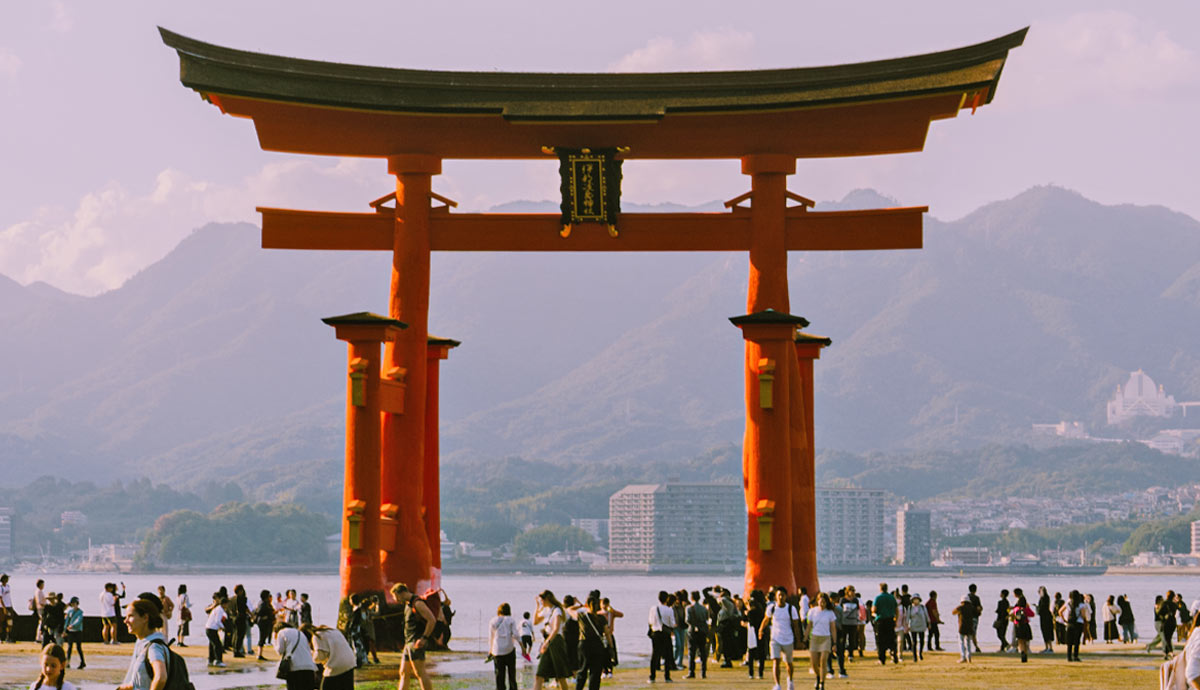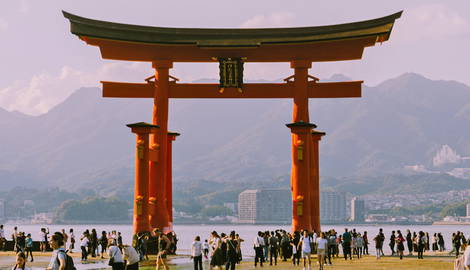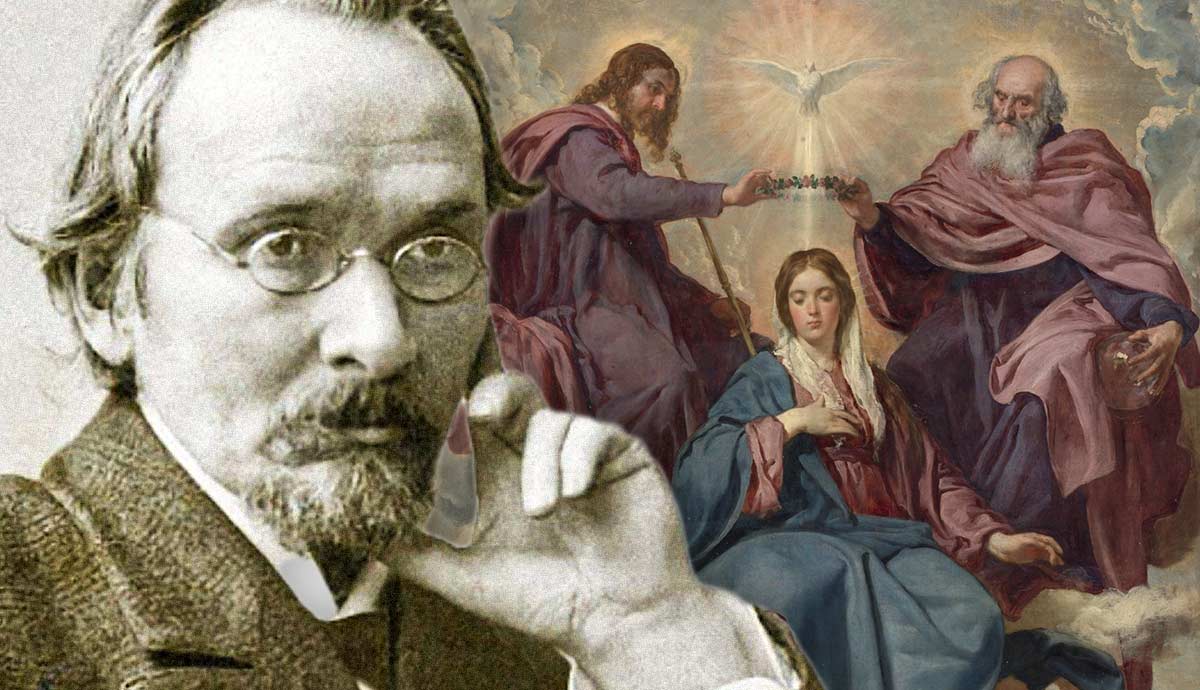
Japan’s native religion, Shinto, is tied directly to the country’s customs, nature, and people. Dotted across the island archipelago are countless shrines and temples that hold a deep significance to followers of Shinto. These sites allow both local and international visitors to step into a world of deep spiritual significance.
1. The Meiji Jingu Shrine in Tokyo

Perhaps one of the most instantly recognizable religious sites in all of Japan is the Meiji Jingu shrine, located in the heart of Tokyo. Despite the fact that it is actually one of the nation’s most modern religious sites, originally built in 1920, Meiji Jingu remains an important place for Shinto believers. The shrine welcomes millions of visitors throughout the year who travel to its holy ground to pay their respects and enjoy the peaceful surroundings.
Since its construction, the shrine played an important role in Shinto religious festivals for decades until World War II, when the temple complex and surrounding gardens were destroyed in a series of Allied bombing raids towards the end of the war. The current shrine complex was constructed thanks to a fundraising effort that took place throughout the 1960s.
The shrine is dedicated to the deified spirits of Japan’s Meiji Emperor, who died in 1912, and his wife, Empress Shoken, who passed away two years later. After the Emperor’s death, the Japanese parliament decreed that a worthy shrine should be constructed in order to commemorate his role in the historic Meiji restoration. While the remains of the royal couple are located elsewhere in the holy city of Kyoto, the site of the shrine was chosen because of its proximity to a nearby garden, which the Emperor and his wife frequented during their reign. After it opened to the public, the Meiji Shrine became a focal point for Shinto festivals. Every year, millions of people from across Japan travel to Tokyo to visit the Meiji Jingu during the New Year tradition of Hatsu.
2. The Fushimi Inari Temple Complex in Kyoto

Second only to Tokyo’s Meiji Jingu, the Fushimi Inari Shrine in Kyoto is a religious site that is practically synonymous with Japan itself. The extensive religious site is not just a tourist attraction but is also an important part of the Shinto belief system for many Japanese people. Located at the base of Mount Inariyama, the paths leading to various shrines within the hillside complex are interlaced with over ten thousand red torii gates.
Historians believe that the first buildings of the shrine complex were constructed in the 7th century and slowly expanded over time. For much of the 19th century, Fushimi Inari was considered by the government of Japan as the foremost religious site of the country, a status that afforded it ample financial and cultural backing.
The Fushimi Inari complex is dedicated to the Japanese fox spirit Inari, a deity that represents rice, agriculture, business, and fertility. In accordance with tradition, the entrance to all Inari shrines is marked by one or more red torii gates. Some scholars believe that the worship of the fox-like deity Inari may have originated at the Fushimi religious site when Emperor Murakami of Japan decreed that the guardian spirits of the nation, one of which is Inari, receive frequent offerings known as heihaku.
Today, the shrine is the focal point for countless local festivals throughout the year, the most famous being the Hatsu-Umeko Festival in February, which marks the beginning of the spring season. Notably, each of the ten thousand Torii gates that mark the way to the domain of the holy Inari spirit was donated by a Japanese business. In recent years, the shrine complex has become a point of debate for those who oppose the influx of mass tourism into Japan following the end of COVID-19-related travel restrictions.
3. Itsukushima Shrine on the Island of Miyajima

The Itsukushima Shrine is located in Eastern Japan near the city of Hiroshima. It sits on the island of Miyajima and is a highly sacred place for Shinto believers; it is also one of Japan’s most photographed landmarks. For centuries, Miyajima Island has been closely associated with Shinto and is considered a key holy site. The tallest mountain on the island, Mount Misen, has been worshiped since as early as the 6th century. In the 12th century, Taira no Kiyomori, the most powerful individual in Japan at the time, chose the island as the site for the construction of his family shrine. Over time, the site soon developed into a place of worship for the Shinto spirit of the sea, storms, and sea voyages. The Itsukushima Shrine complex is made up of several wooden buildings that stretch from the shoreline into the mountainous forests that cover Miyajima Island.
Itsukushima Shrine is host to countless Shinto festivals throughout the year. The most important of these is the Kangen-sai festival, which sees musicians sail through the temple complex at high tide, playing music reminiscent of the 12th century. The shrine is home to a number of Shinto treasures, including the revered Heike Nokyo, a collection of 32 scrolls that recount the Buddhist Lotus, Amida, and Heart sutras. To preserve the purity of the Shinto shrine, no births or deaths are allowed on the island. As such, pregnant women and the terminally ill are banished from the island to avoid polluting the holy site.
4. The Ise Grand Shrine of Mie

While it may not be as widely known as some other religious sites on this list, Ise Grand Shrine, known to the Japanese as the Ise Jingu, is one of the most sacred Shinto places in the whole country. Located in Mie Prefecture, the shrine is made up of over one hundred smaller shrines, with two primary shrines known as the Geku and the Naiku making up the bulk of the complex. What Ise Grand Shrine protects is what makes it such a holy place for Shinto believers. The shrine is home to the kami spirit of the Sun Goddess Amaterasu Omikami, the ancestor of the Japanese imperial family. Reportedly, the shrine is also home to the sacred mirror, one of Japan’s three sacred treasures and a priceless heirloom of the royal family.
Every 20 years, a ceremony known as the Jingū Shikinen Sengū is held in honor Amaterasu and the hundreds of other gods that are enshrined at Ise Jingu. The practice involves the demolition and reconstruction of select temple buildings. New shrines are built on the grounds of Ise Shrine and key religious artifacts are ceremonially housed there. Leftover building materials are distributed to other Shinto shrines around Japan for use in repair and construction projects.
The inner part of the Ise Jingu, Naiku, is accessible only to a select number of Shinto priests and members of the Japanese Imperial family. The shrine complex is a striking example of the shinmei-zukuri architectural style, an elaborate woodworking method that employs traditional building methods without the use of nails or screws. The Ise Grand Shrine hosts key religious festivals throughout the year, such as the annual harvest festival Kannamesai, in which the season’s first harvest is sacrificed to the gods to ensure a bountiful harvest in the year to come.
5. Katori Shrine in Chiba

The Katori Shrine in Chiba is one of the oldest Shinto sites in all of Japan and pre-dates the historical record. According to accounts passed down by local people, the shrine was established in the year 643 BCE during the reign of Emperor Jimmu. The holy place is dedicated to the Shinto god Futsunushi no Mikoto, a spirit that is responsible for swords, combat, strategy, and martial arts.
In Shinto belief, Futsunushi no Mikoto is the leader of Amaterasu’s army and is regarded as the progenitor of the Mononobe family. The shrine is said to be home to one of the three sacred treasures of Japan, the sword Kusanagi no Tsurugi, which is said to be passed down from the Shinto gods to the Imperial family of Japan. Throughout history, members of Japan’s military have traveled to Chiba to pay respect to the gods that dwell at the Katori Shrine. During the Meiji era, Shinto was practiced as a state religion. As part of this practice, a number of shrines were ranked in terms of their importance to the Emperor, and for many years, Katori was awarded the highest rank.
The Shrine is host to an important Shinto festival known as the Reitaisai, which is held every April and is celebrated with traditional archery, dance, and music. The holy place is the most sacred of over four hundred similar Katori shrines across the Kanto region that celebrate the region’s local kami spirits.
6. Toshogu Shrine in Nikko

In contrast to many other Shinto religious sites in Japan, the Toshogu Shrine in Nikko is a holy place that honors an individual, Tokugawa Ieyasu, the founder of the Tokugawa shogunate that ruled Japan for hundreds of years.
Born in 1543, Tokugawa Ieyasu was one of the most significant leaders in Japanese history. After a long career as a skilled tactician, Ieyasu was awarded the title of Shogun by Emperor Go-Yōzei in 1603. As military governor of Japan, he pursued policies that united the nation and even established diplomatic contact with European powers. After his death in 1616, he was deified by Shinto priests, and the holy settlement of Nikko was chosen as the location for his shrine. The Toshogu Shrine is unique in that it combines aspects of traditional Buddhist and Shinto temple architecture to create a complex of elaborate wooden buildings that are remarkable in their simplicity.
A key feature of the Toshogu Shrine is the Yomeimon Torii Gate, which is carved with symbols from Japanese mythology and the Shinto religion. One of the most important festivals to take place at Toshogu is the Grand Spring Festival, which is held at the start of Spring. The festival includes a parade through the temple grounds and is intended to mimic the transfer of Tokugawa Ieyasu’s spirit into the Shinto shrine.
7. The Izumo Taisha In Shimane

The Izumo Taisha Shinto Shrine in Shimane Prefecture is one of the oldest religious sites in the country. The shrine is dedicated to the god Okuninushi no Mikoto, the legendary creator of Japan and a deity of marriage. In Shinto belief, Okuninushi no Mikoto is closely related to the historical region of Izumo. Religious texts state that Okuninushi surrendered his territory to the gods of heaven in an act known as the Kuni-yuzuri. Upon his surrender, the god demanded that a palace be built to honor him at the spot where Izumo Taisha stands today.
Historians believe that this myth reflects the real-world history of Izumo in which the Yamato court absorbed the area into their state. Perhaps the most recognizable symbol of Izumo Taisha is the sacred rope, known as a shimenawa, that adorns the entrance to the main temple and protects against evil spirits.
Today, Izumo Taisha is a popular destination for recently married couples who travel from across Japan seeking a blessing on their relationship and good fortune for the years to come. Izumo Taisha is the focal point of the yearly Kamiari festival that takes place every year. During the festival, the Shinto gods of Japan are said to leave the countless sacred sites from across the country and travel to the Izumo Shrine.
8. Kamigamo Shrine Kyoto

Established in the 7th century, the Kamigamo Shrine is one of the oldest Shinto sites in Kyoto and is a UNESCO World Heritage site. Dedicated to the Shinto deity of thunder, Ajisukitakahikone, the shrine complex is located on the banks of Kyoto’s Kamo River. The complex is a pristine example of the Kamo-zukuri architectural style, a school of design that emphasizes harmony and simplicity through the use of gently sloping roofs and archways.
According to the sacred texts of Kojiki, Ajisukitakahikone is the son of the gods Ōkuninushi and Takiribime. Legend says that as a baby, he cried through the night, and in an attempt to get him to sleep, his mother carried him up and down a ladder. The sound of her footsteps is what created thunder. In adulthood, Ajisukitakahikone played a key role in the Kuni-yuzuri and eventually fathered the rain god Takitsuhiko.
The Kamigamo Shrine is part of a complex of two shrines known as the “Kamo Shrines.” The second shrine, Shimogamo, stands three kilometers downriver from its sister shrine and is home to a temple complex that contains trees that are over 600 years old.
Understanding Shinto: How Japan’s Native Religion Works

Before entering a Shinto shrine, it is important to gain a deeper understanding of the religion itself and what it means to the people who believe in it. Shinto, which means the way of the gods, is a religion indigenous to Japan that incorporates elements of paganism and nature worship. Notably, the practice of Shinto does not involve the worship of one individual or holy text; rather, it involves the worship of Kami. These are holy spirits that inhabit trees, animals, and even mountains. The practice of Shinto is also closely tied to the Japanese royal family, which claims direct lineage to the goddess Amaterasu herself. Therefore, key Shinto shrines play an important role in the tradition of the Japanese Emperor.
What separates Shinto from other major religions is that it is often practiced by those who do not refer to themselves as “believers.” Rather, the Shinto beliefs are an integral part of Japanese culture. In an attempt to institutionalize the religion the Meiji Emperor began a practice of “State Shinto.” The government took control over key shrines, established a Shinto ministry, and even made the moral teachings of the religion a part of state education. The practice of State Shinto ended when Japan surrendered in World War II.
In Shinto belief, the Kami spirits are housed in sacred shrines known as Jinja. These shrines, which can be small or large, can be entered through their distinctive torii gates, which are said to allow the Kami to move freely to and from the shrine. A key part of the Shinto religion is purification, and visitors to any shrine are encouraged to engage in the ritual of purification by washing their hands in the holy shrine water.








